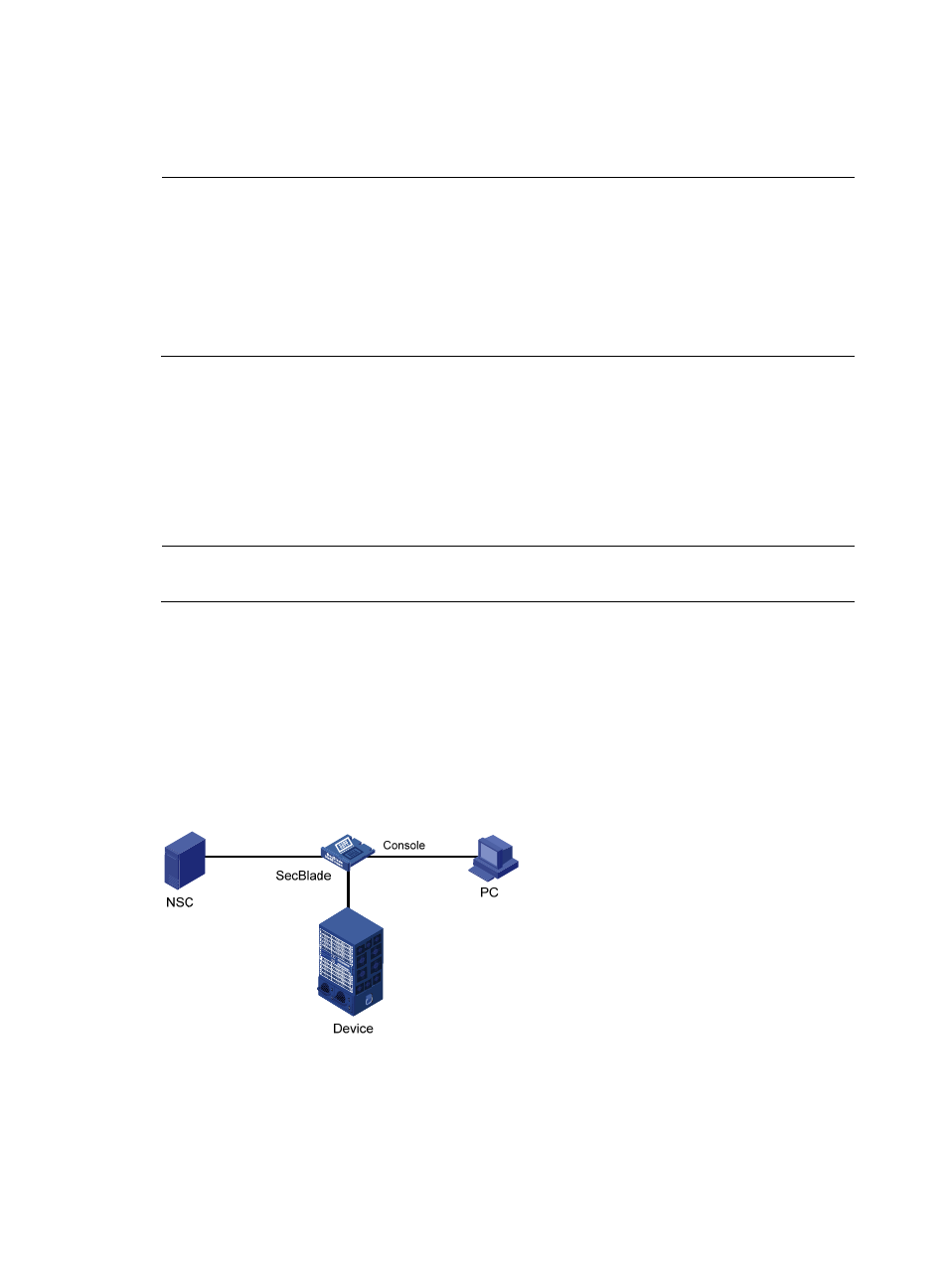Outputting log information to the console, Network requirements, Configuration procedure – H3C Technologies H3C SecBlade NetStream Cards User Manual
Page 293

278
In the above configuration, local5 is the name of the logging facility used by the log host to receive logs.
info is the information level. The Linux system will record the log information with severity level equal to
or higher than informational to file /var/log/SecBlade/info.log.
NOTE:
Be aware of the following issues while editing file /etc/syslog.conf:
•
Comments must be on a separate line and begin with the # sign.
•
No redundant spaces are allowed after the file name.
•
The logging facility name and the information level specified in the /etc/syslog.conf file must be
identical to those configured on the device using the info-center loghost and info-center source
commands; otherwise the log information may not be output properly to the log host.
Step 4: After log file info.log is created and file /etc/syslog.conf is modified, you need to issue the
following commands to display the process ID of syslogd, kill the syslogd process, and restart syslogd
using the -r option to make the modified configuration take effect.
# ps -ae | grep syslogd
147
# kill -9 147
# syslogd -r &
NOTE:
Ensure that the syslogd process is started with the -r option on a Linux log host.
After the above configurations, the system will be able to record log information into the log file.
Outputting log information to the console
Network requirements
•
Log information with a severity equal to or higher than informational will be output to the console;
•
The source modules are ARP and IP.
Figure 85 Network diagram for sending log information to the console
Configuration procedure
# Enable information center.
<SecBlade> system-view
[SecBlade] info-center enable